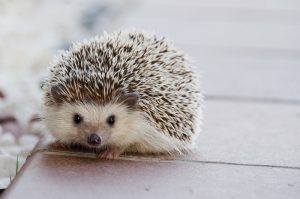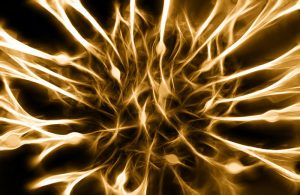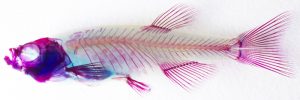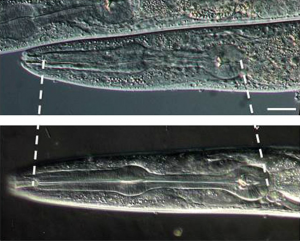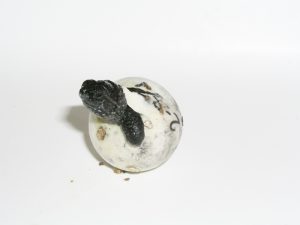Enter your address to receive notifications about new posts to your email.
Articles tagged Development
(27 results)
-
Revisiting Waddington: A new explanation for an old experiment
In the 1940s, C. H. Waddington discovered a peculiar phenomenon in fruit flies: traits could appear in response to environmental stress in an individual’s lifetime and then be passed down to future generations. Waddington proposed that this wasn’t the inheritance of acquired traits, but actually due to pre-existing genetic variation that had no effect until…
-
In Memoriam: Robert C. King (1928–2017)
Guest post by Pamela K. Mulligan and Susanne M. Gollin. Robert C. King, Professor of genetics at Northwestern University for over four decades and a pioneer in studies of Drosophila oogenesis, passed away on June 25th. He was 89. Among scientists in the field, Bob (as he was generally known) was recognized as a world-renowned geneticist,…
-
Protein variance in tightly controlled developmental processes
Take two neighboring cells from the same tissue—cells that are about as identical as any could be. Despite their similarities, these two cells could actually vary massively in their transcriptome. The typical fate of an mRNA—the “transcript” in transcriptome—is to serve as a template to make a protein, but it isn’t clear that the differences…
-
Jonathan Hodgkin awarded the 2017 Novitski Prize
We are pleased to announce that Jonathan Hodgkin, PhD is the 2017 recipient of the Edward Novitski Prize in recognition of his extraordinary creativity and intellectual ingenuity in solving significant problems in genetics research. Hodgkin uncovered the sex determination pathway in Caenorhabditis elegans, an important and widely used model for animal development and genetics. His…
-
Guest post: An interview with Denis Duboule
Guest post by Teresa Bonello It was 1984 and the first cloning of the homeobox sequence in Drosophila had just been reported. Newly-minted postdoc Denis Duboule was called into the office of his mentor, Pierre Chambon, and asked if he wanted to lead his own investigation looking for Hox clusters in mice. What followed was…
-
Trying to Find your Way in the Nervous System? C. elegans can help!
Guest post by Daniel G. Taub. With billions of neurons in the human brain, making the right connections during development seems a daunting task. A developing neuron often follows the lead of trailblazers, using existing bundles of axons called axonal tracts as a guide. But how does the original axonal tract get laid down? In…
-
#TAGC16 Shorts: ancient roots of arthritis
#TAGC16 Shorts are brief summaries of presentations at The Allied Genetics Conference, a combined meeting of seven genetics research communities held July 13-17, 2016 in Orlando, Florida. Elbows, knuckles, and the other synovial joints in your body are mobile marvels of evolution. These joints allow a huge range of possible movements thanks to the presence of…
-
Stretchy cells underlie organ development
Animals’ complex body plans come at a cost: their development is elaborate and must be delicately controlled. One critical aspect of development is size and shape control—every organ needs to fit in its place. The process requires the orchestration of a dizzying number of pathways, and understanding even a single component is far from trivial.…
-
First gene linked to temperature-dependent sex determination
The sex of many reptile species is set by temperature. New research reported in the journal GENETICS identifies the first gene associated with temperature-dependent sex determination in any reptile. Variation at this gene in snapping turtles contributes to geographic differences in the way sex ratio is influenced by temperature. Understanding the genetics of sex determination…
-
New Faculty Profile: Folami Ideraabdullah
New Faculty Profiles showcase GSA members who are establishing their first independent labs. If you’d like to be considered for a profile, please complete this form on the GSA website. Folami Ideraabdullah Assistant Professor (since 2013) Department of Genetics University of North Carolina School of Medicine Lab website Research program: My lab studies epigenetic mechanisms…
-
Inducing lifesaving sleep in worms
Sometimes, a nematode worm just needs to take a nap. In fact, its life may depend on it. New research has identified a protein that promotes a sleep-like state in the nematode Caenorhabditis elegans. Without the snooze-inducing molecule, worms are more likely to die when confronted with stressful conditions, report researchers in the March 7, 2016…



